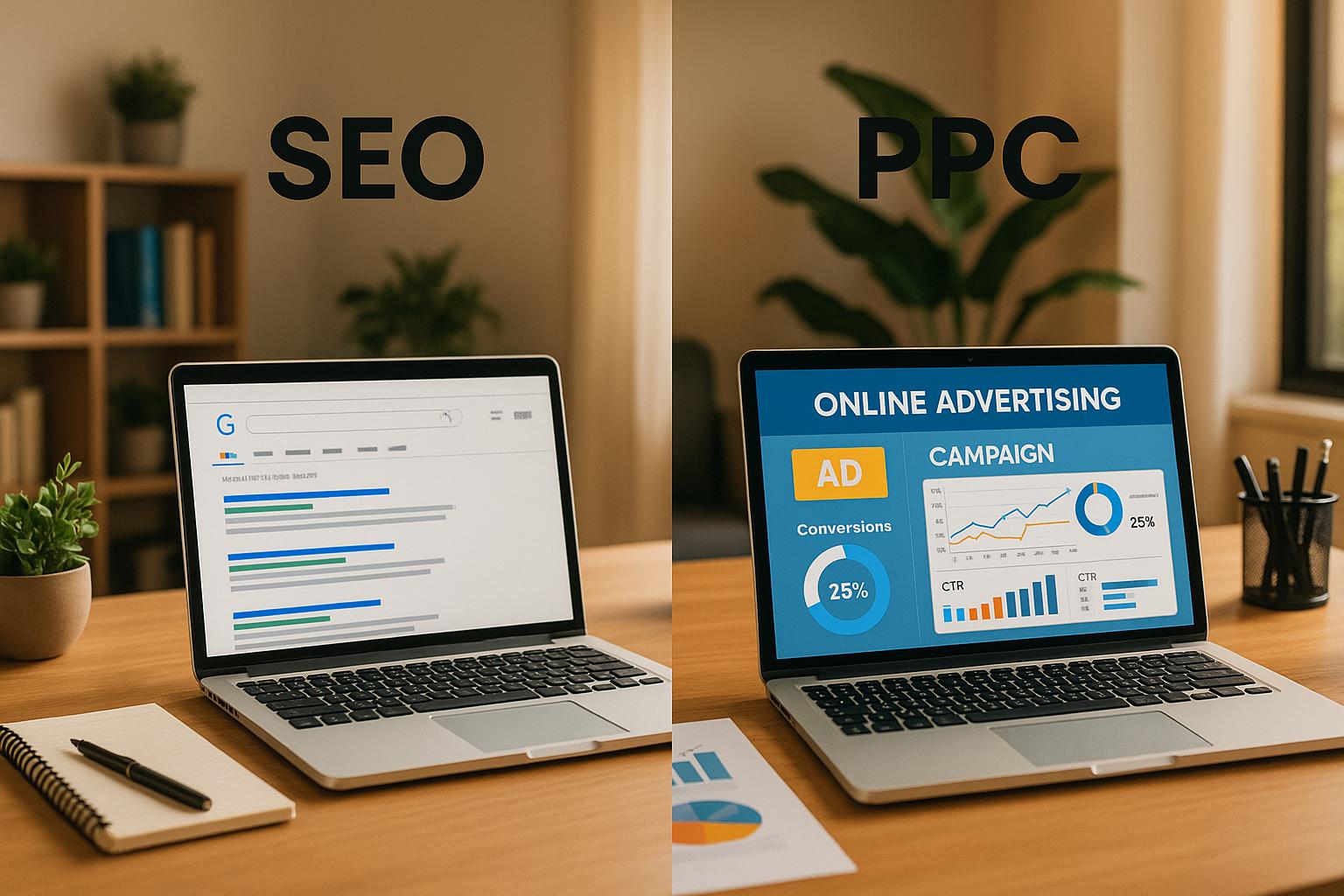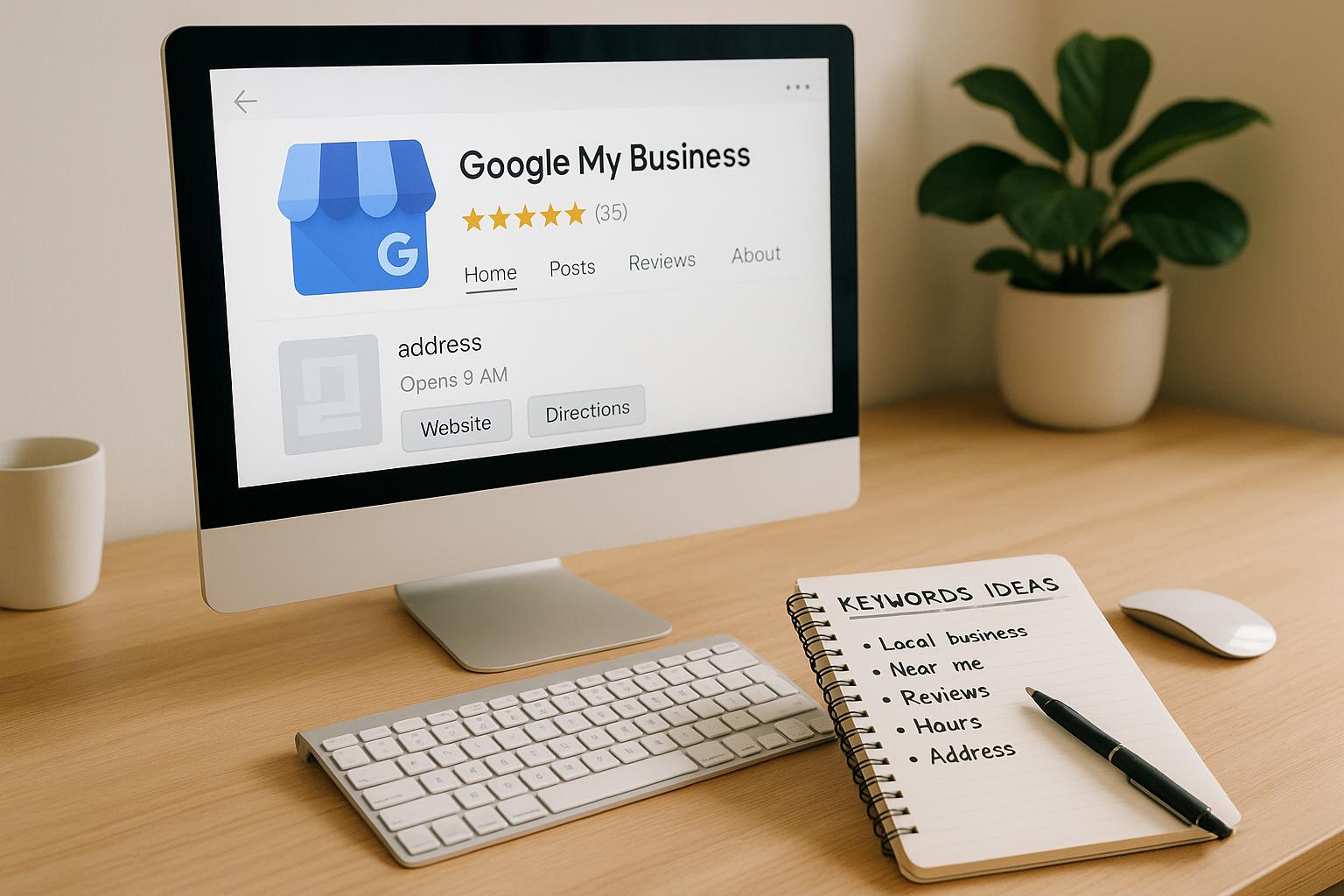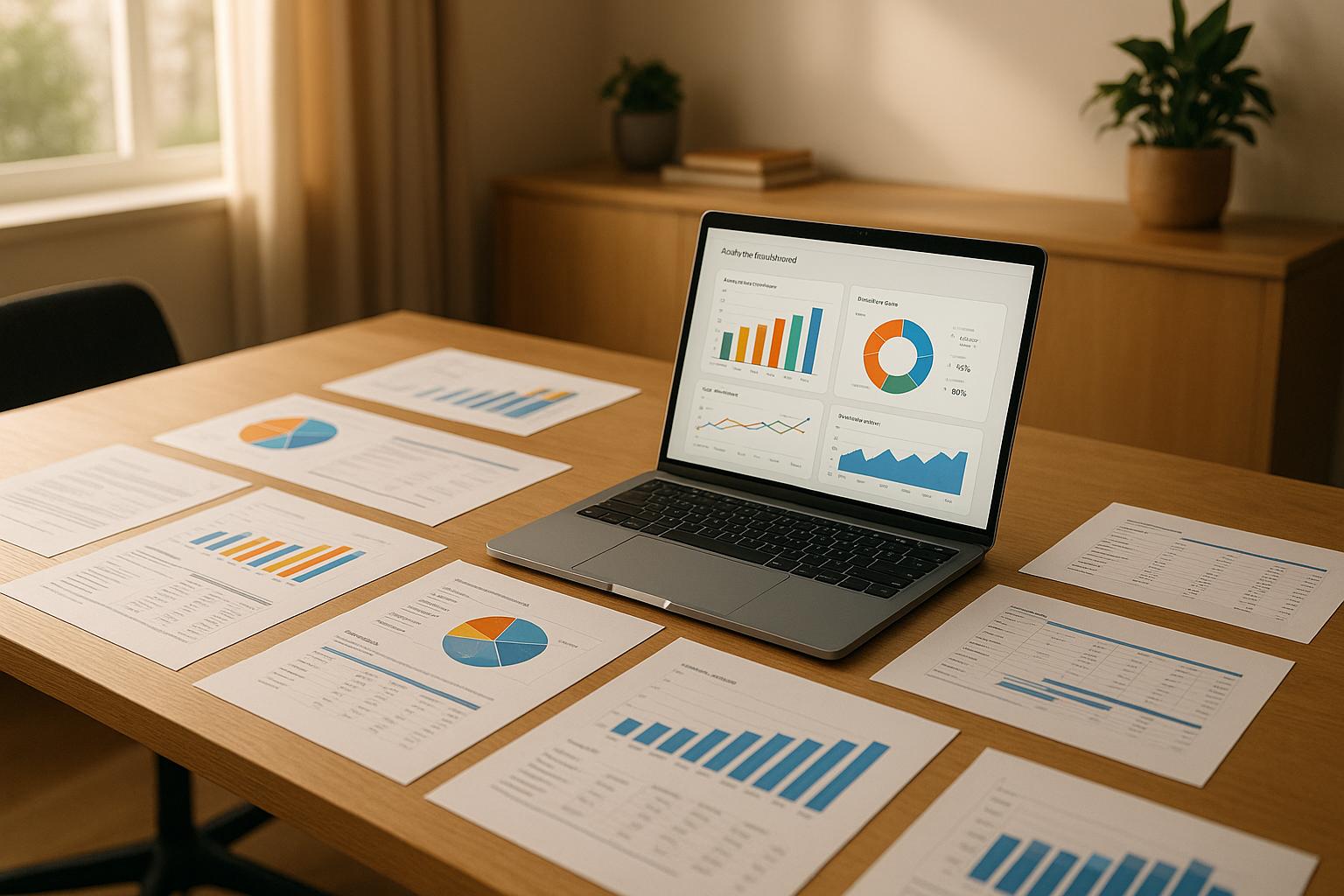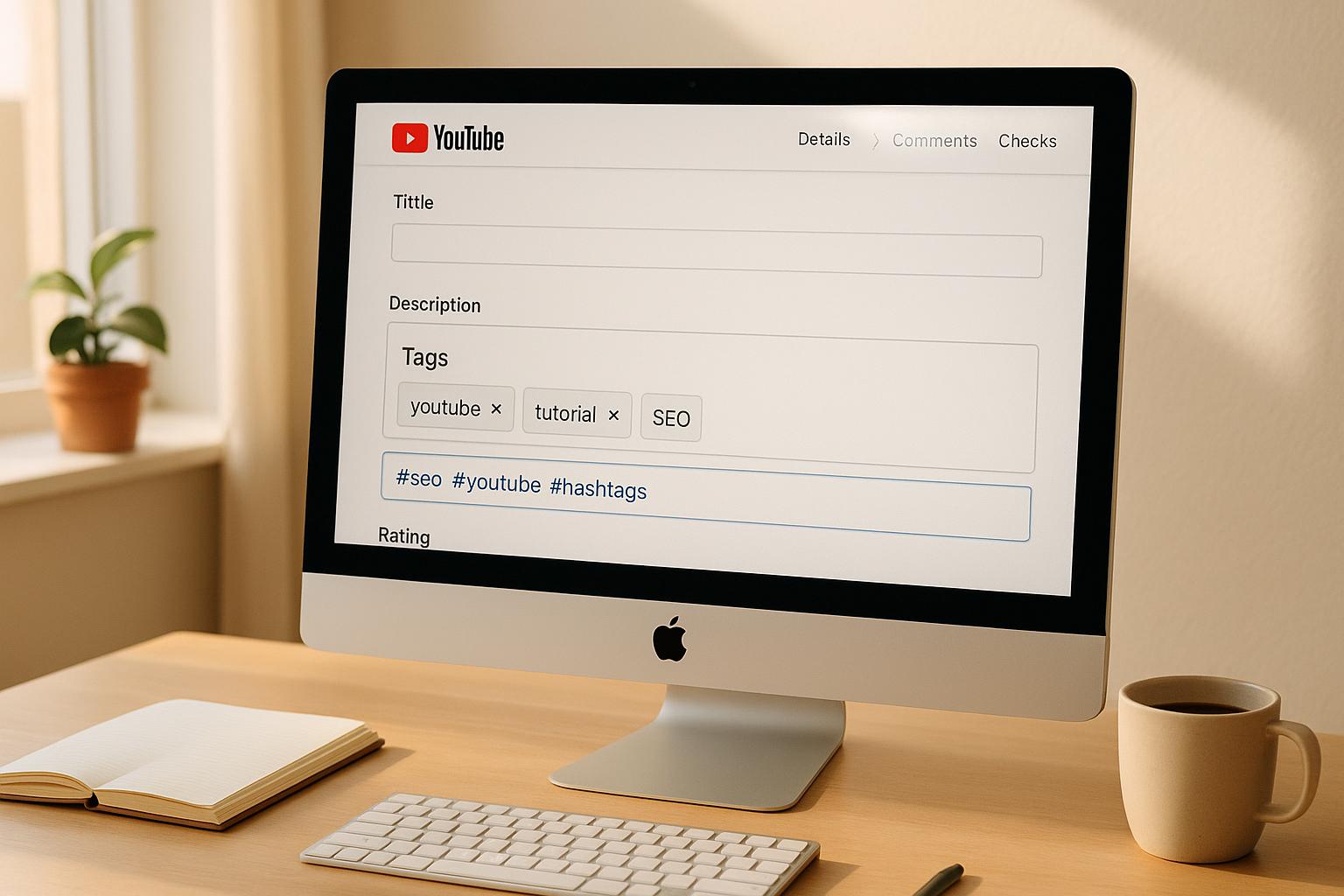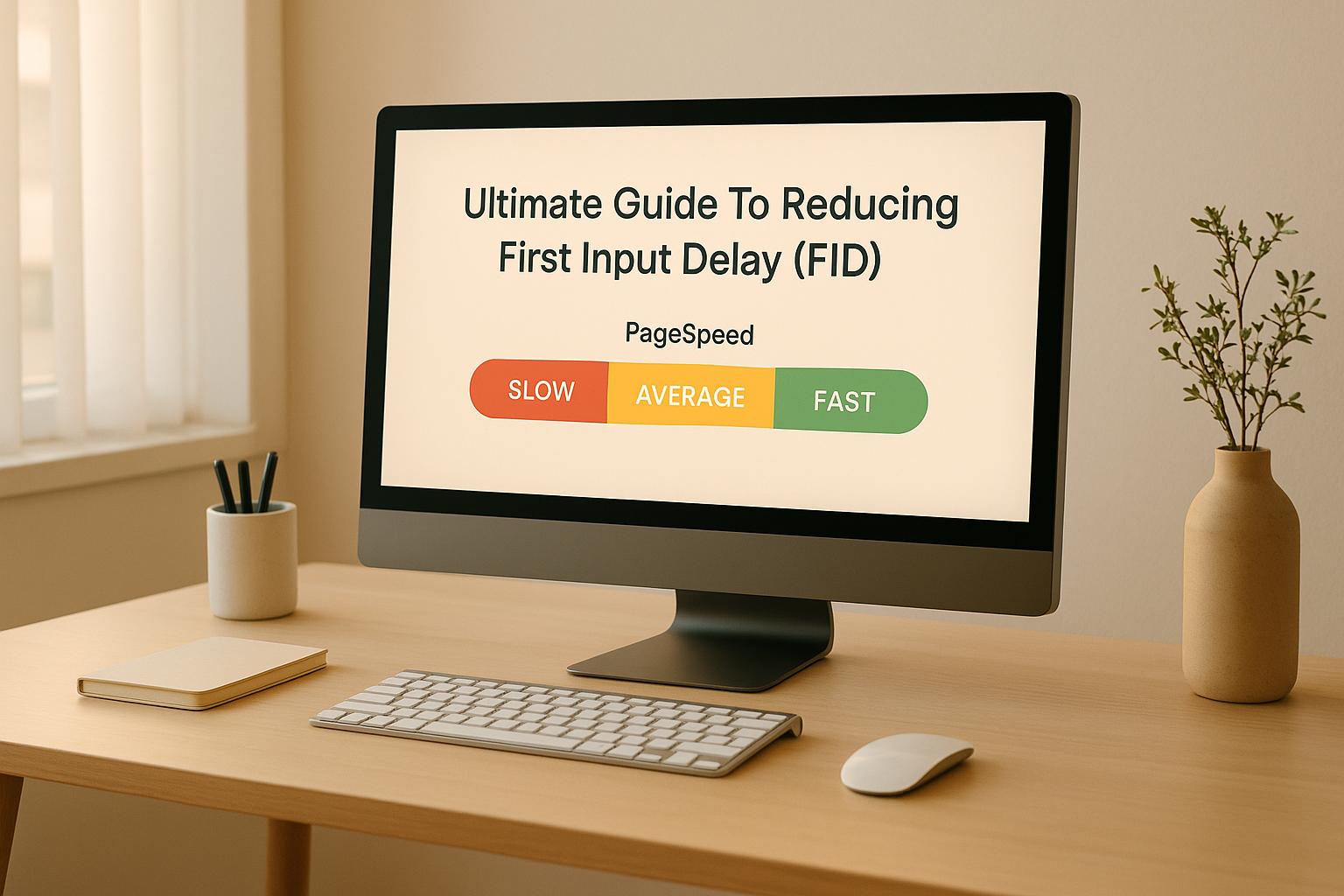SEO vs PPC: Which Strategy Drives Better ROI?
September 22, 2025SEO and PPC are two of the most popular digital marketing strategies for driving traffic and boosting ROI. But which one is better for your business? Here's a quick summary to help you decide:
- SEO (Search Engine Optimization): Focuses on improving organic search rankings. It’s a long-term strategy that requires an upfront investment but delivers sustainable traffic and higher ROI over time. Industries like real estate and legal services often see ROI exceeding 500%.
- PPC (Pay-Per-Click): Provides immediate visibility through paid ads. It’s ideal for quick results, time-sensitive promotions, or testing new markets. However, ROI typically averages around 200% and stops when ad spend ends.
Quick Comparison
| Factor | SEO | PPC |
|---|---|---|
| Time to Results | Months to see results | Immediate |
| Cost Structure | Upfront investment, no recurring costs | Pay-per-click, ongoing ad spend |
| Traffic Sustainability | Long-lasting traffic | Stops when ad spend ends |
| ROI Potential | Higher long-term ROI (500%+ in some cases) | Lower ROI (~200%) |
| Best For | Long-term growth, high-research industries | Quick visibility, time-sensitive goals |
Key Takeaway:
SEO is best for businesses focused on long-term growth and sustainability, while PPC works for those needing immediate results or short-term campaigns. Combining both strategies often yields the best outcomes.
How To Calculate The ROI Of SEO And PPC
How SEO Delivers ROI
SEO works much like compound interest - consistent effort leads to growing returns over time. Unlike paid ads, which stop driving traffic the moment you pause spending, SEO creates a lasting foundation. This means the work you put in today can continue to bring visitors and conversions long after the initial investment. It’s a long-term strategy that stands in stark contrast to the temporary boost offered by PPC.
SEO Takes Time to Show Results
Patience is key when it comes to SEO. Search engines need time to crawl, index, and adjust rankings for optimized pages. While you might not see immediate traffic spikes, steady and consistent SEO efforts eventually build momentum. Over time, this translates into a reliable increase in organic traffic and conversions.
Once a page secures a good position in search results, it can continue delivering traffic for years with minimal ongoing effort. Compare that to PPC: as soon as the campaigns stop, so does the traffic. SEO, on the other hand, becomes a dependable, long-term asset for generating leads and driving sales.
SEO Costs and Returns
Understanding the cost structure of SEO highlights why it’s a long-term investment. Unlike PPC, where you pay for every click, SEO requires an upfront investment in areas like audits, keyword research, content creation, and technical fixes. These efforts improve your site’s performance over time, creating a foundation for ongoing success.
As your organic rankings improve, your cost per acquisition steadily decreases. The work you do today continues to pay off in the future, delivering a compounding return on investment. Plus, content and technical upgrades provide lasting value, even years after the initial investment.
Industries Where SEO Works Best
SEO shines in industries where customers rely heavily on research before making decisions. For example, the legal sector often sees strong results because potential clients frequently search for legal advice and services online. Similarly, financial services - like mortgage brokers, insurance providers, and wealth managers - benefit from high-intent search queries.
E-commerce businesses, especially those in niche markets, can use SEO to target product-specific or problem-solving keywords, helping them stand out. Healthcare providers, especially specialists or those offering elective procedures, can attract high-intent traffic by creating informative and service-oriented content.
Local service providers - think HVAC technicians, plumbers, roofers, and landscapers - also gain significantly from local SEO campaigns. These strategies help them connect with nearby customers who are ready to act.
The key across all these industries is simple: when customers take the time to research before making a purchase, a well-planned SEO strategy can deliver lasting and meaningful returns.
How PPC Delivers ROI
PPC stands out for its ability to drive immediate traffic, a stark contrast to SEO's gradual, long-term approach. While SEO builds lasting success over time, PPC delivers instant results. Think of it as renting traffic - you pay for every visitor, and when the payments stop, so does the influx of traffic. Despite this, the speed and level of control PPC offers make it an excellent choice for specific business situations.
Let’s break down how PPC’s immediacy translates into fast, measurable outcomes.
PPC Delivers Fast Results
One of PPC’s biggest strengths is how quickly campaigns can be launched and start driving clicks. This makes it perfect for businesses that need immediate visibility or are running time-sensitive promotions.
With PPC, advertisers have real-time control over their campaigns. You can adjust budgets, pause ads, or tweak targeting and messaging on the fly. This level of flexibility allows businesses to stay responsive to shifting market conditions, competitor moves, or seasonal trends.
For example, when launching a new product, waiting for organic growth isn’t always feasible. PPC provides the speed needed to test market demand, experiment with different value propositions, and refine messaging - all without delay.
PPC Costs and Performance Data
The cost of PPC campaigns varies based on factors like industry competition and keyword demand. Highly competitive industries often face steeper cost-per-click rates, while others may enjoy lower pricing. Conversion rates also differ by market, influencing customer acquisition costs and overall ROI.
One of PPC’s standout benefits is its cost predictability. By setting clear acquisition and conversion goals, businesses can estimate the budget needed to achieve specific revenue targets. This predictability is especially valuable for companies with well-defined sales funnels and a strong understanding of their customer lifetime value.
Grasping these cost dynamics helps businesses determine when PPC can deliver the most impactful results.
When to Use PPC
PPC shines in situations where immediate results are critical. It’s particularly effective for time-sensitive promotions and seasonal campaigns, where its quick activation and adaptability come into play.
In competitive industries where achieving high organic rankings may take months - or even years - PPC offers a reliable way to secure visibility. It’s also a smart option for businesses exploring new markets. By using PPC, companies can test demand in specific regions before committing to a full-scale expansion.
Another scenario where PPC excels is for high-value, low-volume products or services. In these cases, the higher cost of advertising is offset by the significant lifetime value of each customer. Additionally, PPC’s speed and control make it a valuable tool for managing urgent reputation issues or crisis situations, allowing businesses to deliver tailored messaging quickly and effectively.
sbb-itb-cef5bf6
SEO vs PPC: Side-by-Side Comparison
Looking at SEO and PPC side by side reveals clear differences in timing, cost, and control, making it easier to understand how each fits into a broader marketing strategy.
SEO vs PPC Comparison Chart
Here’s a breakdown of how SEO and PPC stack up across key factors:
| Factor | SEO | PPC |
|---|---|---|
| Time to Results | Takes months to see noticeable results. | Delivers almost instant visibility after launch. |
| Cost Structure | Requires upfront investment and ongoing optimization. | Operates on a pay-per-click model. |
| Traffic Sustainability | Continues driving traffic even after efforts slow. | Traffic stops immediately when ad spend halts. |
| ROI Potential | Can yield high long-term returns with consistent effort. | ROI depends heavily on campaign management. |
| Click-Through Rates | Organic results often see higher engagement. | Paid ads usually have lower engagement compared to organic listings. |
| Trust Factor | Builds more trust with users. | Users may view ads with skepticism since they’re clearly labeled as sponsored. |
| Control Level | Offers limited control over rankings. | Provides significant control over ad placement, timing, and targeting. |
| Scalability | Grows gradually as efforts accumulate. | Can be scaled instantly by increasing the budget. |
This comparison highlights how each method influences your marketing outcomes and ROI.
What Affects ROI for Each Method
Several factors play a role in determining the ROI for SEO and PPC:
- Industry Competition: In highly competitive sectors, PPC costs can skyrocket, making SEO a better long-term strategy. Conversely, in niche markets, PPC might be a cost-effective way to gain traction while SEO efforts take root.
- Business Lifecycle Stage: Established brands often see stronger results from SEO, while newer businesses may need PPC for quick visibility.
- Customer Lifetime Value: Businesses with high-value customers can justify larger PPC budgets. On the other hand, for companies with lower-margin products, SEO often provides a more sustainable solution over time.
- Geographic Targeting: Local businesses often thrive with localized SEO, while PPC’s ability to target specific regions makes it ideal for businesses operating across multiple areas.
Using SEO and PPC Together
Combining SEO and PPC creates a well-rounded strategy that balances immediate results with long-term growth:
- Data Sharing: PPC campaigns can identify high-performing keywords, which SEO strategies can then emphasize. Similarly, SEO research can uncover long-tail keywords and content gaps that enhance PPC ad copy and landing pages.
- Maximizing Coverage: Appearing in both organic and paid search results increases visibility and reinforces your brand’s presence, improving engagement and trust.
- Budget Efficiency: During critical times like product launches or seasonal peaks, PPC can deliver quick wins, while ongoing SEO efforts build a steady foundation for growth. When PPC costs rise due to competition, strong organic rankings can help maintain traffic.
- Risk Management: Relying on both channels diversifies your traffic sources. For instance, if an algorithm update impacts your organic rankings, a well-executed PPC campaign ensures continued visibility.
How to Choose the Right Strategy
Deciding between SEO and PPC - or finding the right balance - comes down to understanding your goals and resources. By carefully evaluating these elements, you can settle on a strategy that delivers the best return on your investment.
What to Consider Before Deciding
Start by assessing your timeline, budget, resources, competition, and how your business acquires customers.
If you’re on a tight deadline, like launching a new product or running a short-term promotion, PPC can provide the quick visibility you need. On the other hand, if your focus is on long-term growth, SEO builds momentum over time, offering sustained benefits.
Budget is another key factor. PPC requires consistent monthly spending, while SEO involves an upfront investment followed by periodic updates. Consider your team’s skills and market conditions to determine which approach aligns best with your capabilities.
Internal resources also play a big role. SEO involves creating content, managing technical aspects of your website, and ongoing optimization. If your team lacks these skills, you may need to invest in training or hire outside help. Similarly, PPC demands expertise in managing campaigns, writing ad copy, and tracking conversions.
Your customer acquisition patterns are equally important. Businesses with a high customer lifetime value might justify spending more on PPC to attract new customers. Conversely, if you operate with tighter profit margins, the cost efficiency of organic traffic through SEO could make more sense. For example, many B2B companies benefit from the trust and authority that SEO builds over time, while e-commerce businesses often lean on PPC for its ability to drive immediate sales.
These considerations will help you decide whether to prioritize short-term wins or long-term growth.
How SEO Werkz Can Help
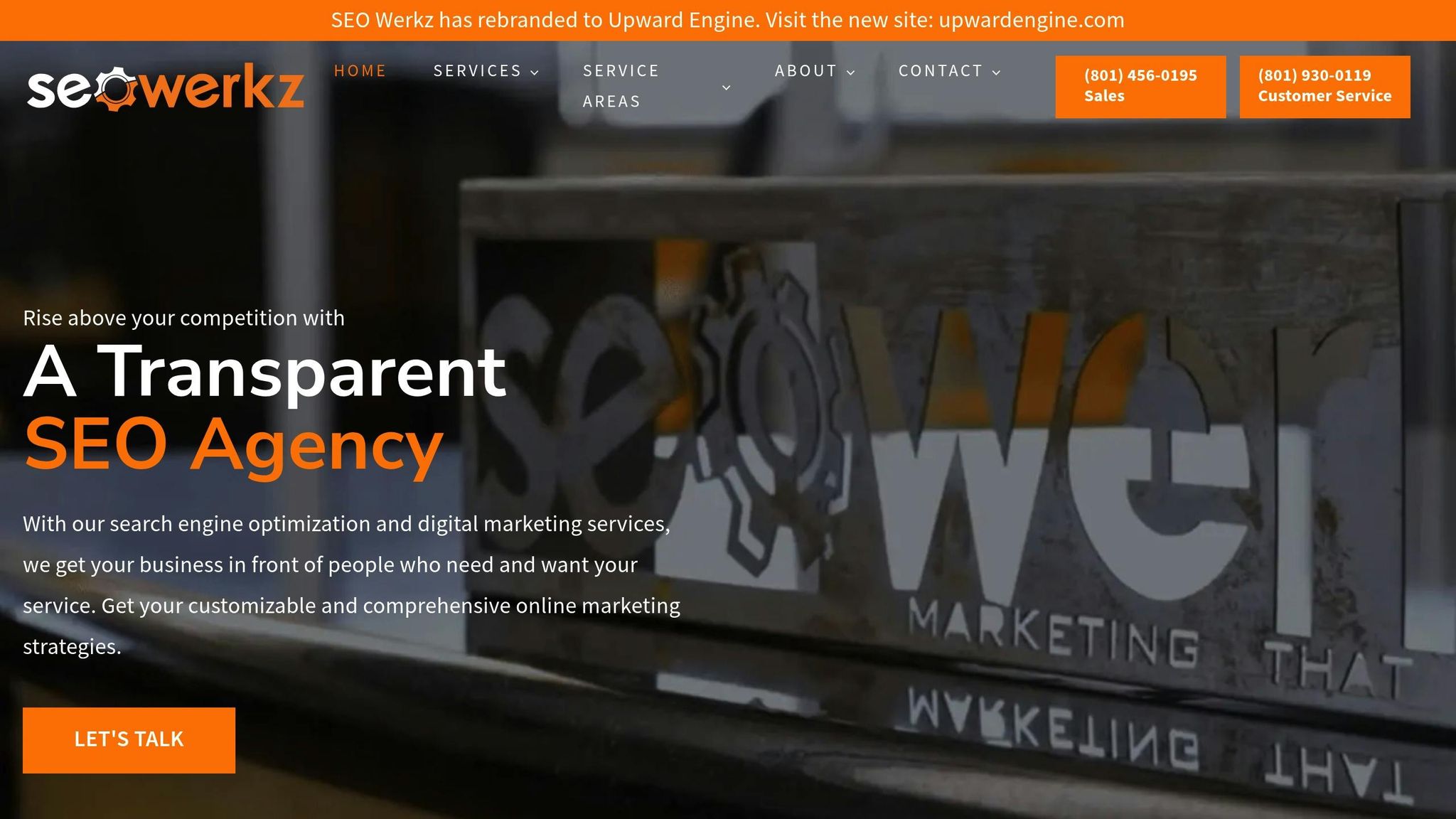
SEO Werkz specializes in crafting personalized digital marketing strategies tailored to your business. They take the time to understand your industry, competitors, and growth goals, ensuring their approach is tailored - not generic.
Their SEO services cover everything from keyword research and on-page optimization to link building and detailed reporting. With SEO Werkz handling the technical and strategic aspects, you’ll always know how your campaigns are performing.
For businesses seeking faster visibility, their PPC services focus on optimizing campaigns for maximum results. This includes setting up campaigns, managing keyword bids, testing ad copy, and running retargeting efforts to re-engage visitors who didn’t convert initially.
What sets SEO Werkz apart is their ability to integrate SEO and PPC for even better results. PPC campaigns can provide valuable data to refine SEO strategies, while SEO research can enhance the quality and relevance of PPC ads.
They also offer solutions tailored to specific industries. Whether you’re a local restaurant or a national tech company, SEO Werkz adapts their strategies to fit your market, customer behavior, and competition.
On top of strategy development, they provide tools and techniques to track performance and uncover growth opportunities. Regular reports keep you updated on key metrics like organic traffic, keyword rankings, conversion rates, and cost per acquisition.
Once your strategy is in motion, consistent tracking and adjustments ensure it continues to deliver results.
Track and Measure Your Results
Both SEO and PPC require ongoing monitoring and fine-tuning to succeed. While the metrics differ for each, some universal principles apply.
One of the most important metrics is revenue attribution. By tracking how much revenue comes from organic search versus paid ads, you can identify which channels are driving the best ROI and adjust your budget accordingly.
For SEO, focus on metrics like organic traffic growth, keyword ranking improvements, and conversion rate changes. Since SEO takes time to show results, it’s more effective to review progress monthly rather than daily.
PPC campaigns require close attention to metrics such as cost per click, click-through rates, and conversions. Small tweaks in these areas can significantly improve your budget efficiency. Identifying which keywords and ad copy work best allows you to scale successful elements while cutting underperformers.
Customer lifetime value is another crucial metric. For instance, if customers acquired through organic search tend to bring in more value over time, the upfront investment in SEO might pay off better in the long run. Insights like these can help guide how you allocate your budget.
Don’t forget to implement conversion tracking that captures long-term customer behavior. Understanding how different channels contribute to your sales funnel allows you to refine your strategy.
Additionally, keep an eye on your competitors. Regularly analyzing their SEO and PPC efforts can reveal new opportunities or highlight potential threats. By treating performance tracking as an ongoing process, you’ll stay ahead of market changes and keep your strategy aligned with your business’s growth goals.
Final Thoughts on SEO vs PPC ROI
SEO and PPC each offer distinct paths to driving profitability, and the right choice depends on your specific business needs, goals, and resources.
SEO is all about building long-term value through organic traffic. Once your site ranks well, you can maintain visibility without constantly spending on ads. That said, SEO requires patience and steady effort to see results. It’s particularly effective for businesses with longer sales cycles, high customer lifetime value, and the capacity to create quality content consistently.
PPC, on the other hand, delivers immediate visibility and allows for precise targeting, making it ideal for time-sensitive campaigns or product launches. The trade-off? Traffic stops as soon as you stop paying. PPC is a great fit for businesses with solid conversion processes, sufficient budgets for ongoing campaigns, and a need to quickly enter or dominate a market.
Combining these two strategies can be incredibly effective. With PPC, you can generate immediate revenue while SEO works in the background to build long-term assets. Plus, the data from PPC campaigns can guide your SEO keyword strategy, while SEO research can improve PPC ad relevance and quality scores.
The best approach often depends on your industry. B2B companies tend to benefit from SEO’s ability to build authority and trust, while e-commerce businesses often see quicker returns from PPC’s direct-response capabilities. Local businesses might focus on local SEO for consistent visibility while using PPC to boost seasonal promotions.
Your budget also plays a key role. For startups, PPC can provide quick validation and immediate sales, with SEO becoming a bigger focus as the business grows. Established companies often balance both, using PPC to capture high-intent traffic while leveraging SEO to build brand authority and attract broader search interest.
Ultimately, success lies in aligning your strategy with your goals - whether that’s driving immediate sales, increasing brand awareness, gaining market share, or reducing long-term customer acquisition costs. Regular analysis and adjustments will help ensure your ROI stays on track.
FAQs
How can businesses decide the right mix of SEO and PPC for their industry?
To strike the right balance between SEO and PPC, businesses need to start with a clear understanding of their audience, competition, and overall goals. Here's an example: if you're in an industry where customers make quick purchase decisions - like emergency plumbing - PPC might deliver faster results. On the other hand, if you're focused on building long-term visibility, SEO should take center stage.
Setting clear objectives is crucial. Decide what you want to achieve with each strategy - whether it's immediate sales through PPC or sustained organic traffic with SEO. Interestingly, your PPC campaigns can provide valuable insights, like which keywords perform well or where your audience is located. You can use this data to refine your SEO efforts for better alignment.
Regularly reviewing performance metrics is non-negotiable. Keep an eye on trends in your industry, shifts in customer behavior, and, of course, your budget. By testing and tweaking your approach over time, you can craft a strategy that balances short-term wins with long-term growth, ultimately maximizing your ROI.
What are the most common mistakes businesses make when combining SEO and PPC strategies?
When blending SEO and PPC strategies, businesses sometimes fall into common traps that can hinder their success:
- Unclear objectives: Without well-defined goals, campaigns can lose focus, making it hard to achieve impactful results.
- Ignoring negative keywords: Skipping negative keywords in PPC campaigns can result in wasted ad spend on irrelevant traffic.
- Poor tracking setup: Without proper conversion tracking, it becomes challenging to analyze performance and fine-tune campaigns for better outcomes.
By steering clear of these mistakes and focusing on clear planning, accurate tracking, and seamless coordination between SEO and PPC efforts, businesses can boost their ROI and build a more unified marketing approach.
How does customer lifetime value (CLV) influence whether to focus more on SEO or PPC?
Customer lifetime value (CLV) is a critical factor when deciding between SEO and PPC strategies. For businesses with customers who generate significant revenue over their lifetime, SEO often stands out as the smarter option. Why? Because it builds organic visibility over time, attracting loyal, high-value customers and offering a solid long-term payoff.
In contrast, PPC is all about speed. It’s great for quickly reaching high-value customers and generating immediate results. However, it requires continuous spending to maintain visibility. That said, PPC can work hand-in-hand with SEO, offering quick wins while your organic strategy gains traction. By understanding your CLV, you can strike the right balance between these approaches to align with your business goals and maximize ROI.
